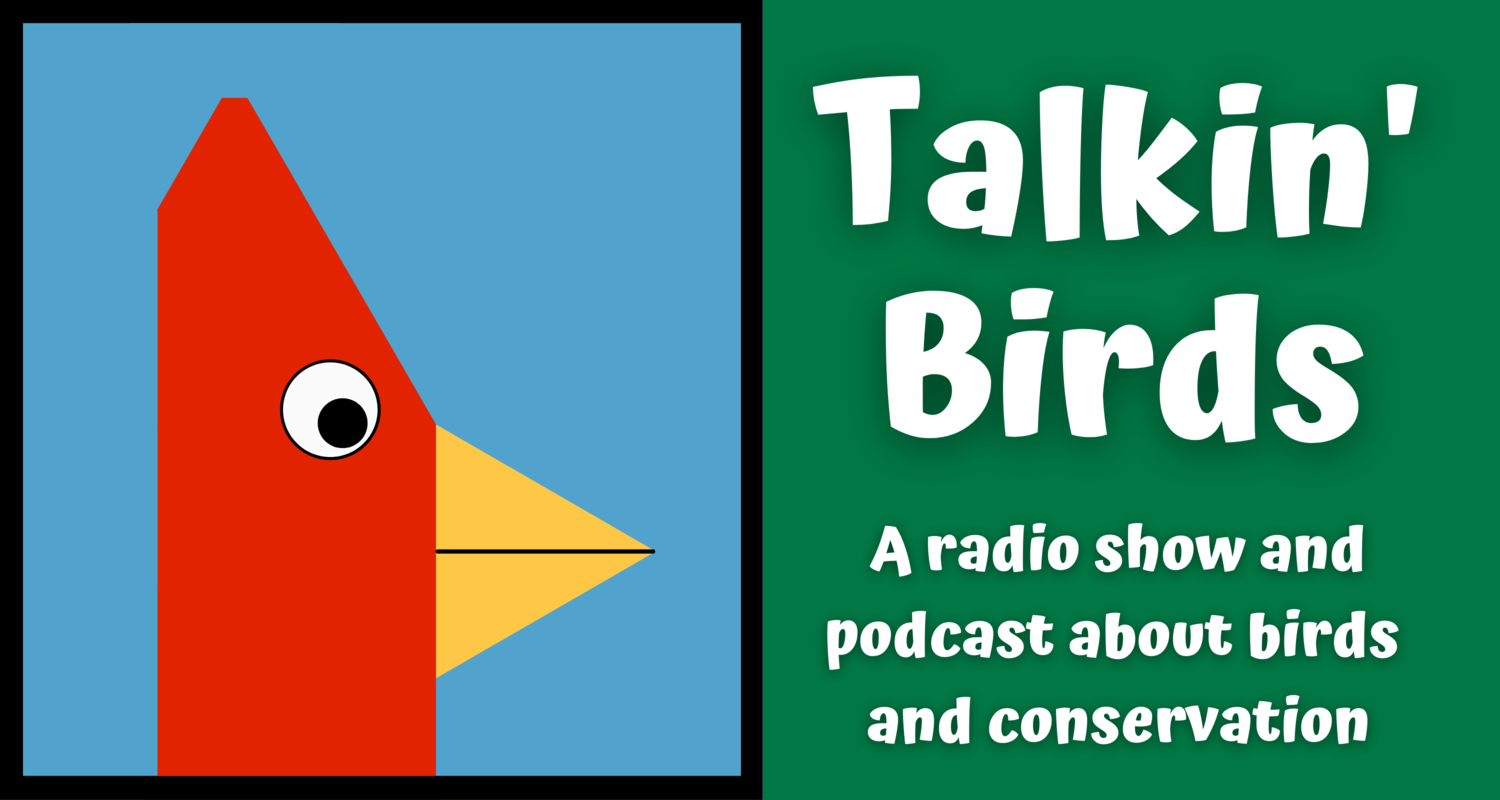Send us an Audio Postcard
We love hearing short audio messages from listeners sharing the bird sounds around them. These ‘audio postcards’ originated when our Freya McGregor had just started working for the show in early 2019 and returned home to Australia for a visit. Her Rainbow Lorikeet audio postcard, recorded in her parents’ backyard in Melbourne, was aired on Show #723. Since then, dozens of listeners from across the U.S. and around the world have sent us audio postcards, and we’d love to receive one from you!
The map below shows all the locations of audio postcards we’ve played on the show. Click on each pin for a link directly to that show and have a listen! The pins with the parrot symbol are audio postcards from our own Freya McGregor, and the eagle pins show locations of audio postcards sent in by our listeners.
How to make your own audio postcard — some advice from Freya
It’s easy! All you need is a recording device (I use the ‘Voice Memo’ app that comes standard on iPhones), the bird, and you! Below are some tips to keep in mind. Once you’ve recorded, email the recording to ray@talkinbirds.com and you might hear it on the show!
Find a bird. It doesn’t have to be rare or uncommon. We have listeners from all over the world, so even if it’s a bird you see or hear often, there will be people listening who aren’t familiar with it at all.
If it’s making noise, great! Capture that sound if you can. If it’s not, tell us what it looks like, or describe what it’s doing. Beautiful plumage or quirky behavior doesn’t translate to radio… unless you describe it for us!
Try to reduce any background noise (especially wind). It isn’t possible to edit out background noise (people using the trail, or nearby traffic sounds). Wind is particularly tricky, because it might not seem to be howling past you when you’re there, but even small gusts can get amplified by the microphone, making it really hard for listeners later. Sometimes I only discover the wind whooshes when I listen back to it later…! So, after you’ve finished recording, turn down your volume (so as not to distract the bird) and listen back to it. Sometimes the bird will still be hanging around making noises, and you can have another go at recording if you need to — perhaps with your back to the wind and hands cupped around the microphone to protect it.
Let the bird take center stage. I let the bird call for about 4-5 seconds before I start talking, to help set the scene for listeners and make sure they hear the bird. That way, if the bird flies off or goes quiet, at least I’ll have a record of it at the beginning! I usually start off speaking quietly, too, in an effort not to scare the bird away.
After a few seconds of the bird calling, I say hi and introduce myself by name. I share where I am (because this information might help someone learn something about the species’ distribution), and then I share the name of the bird.
Try to stay relaxed and friendly as you talk; imagine you’re sharing this bird with a friend who’s just getting into birds. Smile, if you can, as you’re talking — you can hear smiles in people’s voices.
Talking slowly is helpful, and so are pauses in between sentences to help give listeners a micro ‘listening break’ — and let the bird sounds come through.
Try to avoid reading out a script for an audio postcard. Reading something aloud often sounds different to chatting informally.
Keeping audio postcards relatively short is important. Talkin’ Birds is a 30 minute show, so I try to keep my audio postcards no longer than one minute.
I usually wrap up with something like, “I just wanted to share this with you! OK, bye!” You can say whatever you’d like to to sign off — as long as you sign off. Don’t leave us hanging…!
If you listen back to it immediately after recording, you might find you’d like to re-record it. That’s OK — go for it!
Unfortunately, we won’t be able to play every audio postcard we receive — if there’s too much background noise or the recording quality wasn’t high enough it may not make great radio… Don’t be discouraged though — these things sometimes take practice (and need a little luck). Next time you hear a bird loud and clear, have another go!

